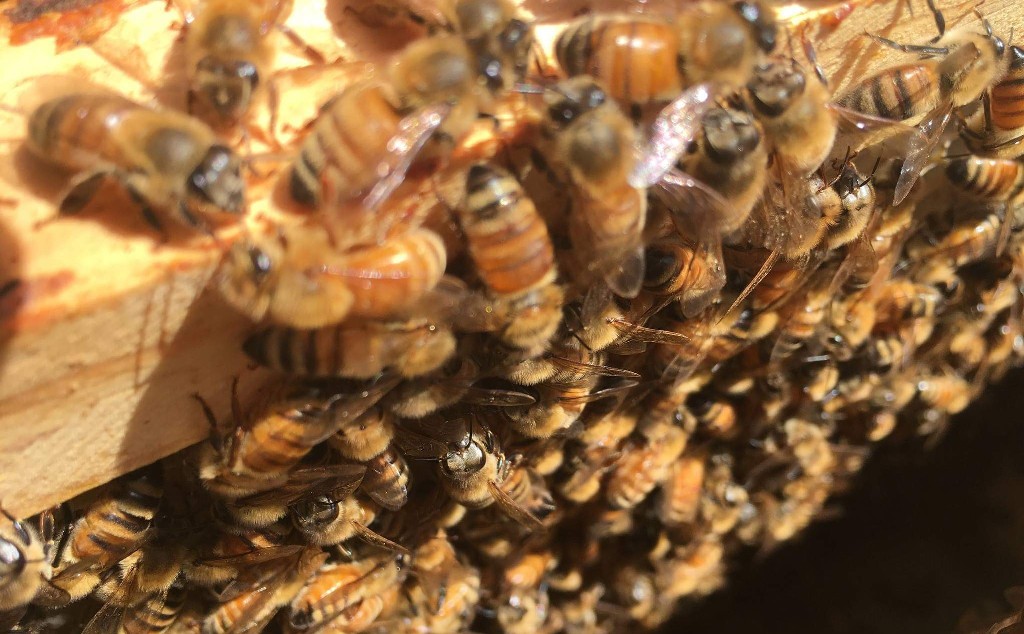NEMOBA
Northeast Missouri Beekeepers Association
Honey bee info
The honey bee is a colonial insect that is often maintained, fed, and transported by beekeepers. Honey bees do not survive individually, but rather as part of the colony. Reproduction is also accomplished at the colony level. Colonies are often referred to as superorganisms. Honey bees collect flower nectar and convert it to honey which is stored in their hives. The nectar is transported in the stomach of the bees, and is converted to honey through the addition of various digestive enzymes, and by being stored in a “honey cell,” and then partially dehydrated. Nectar and honey provide the energy for the bees’ flight muscles and for heating the hive during the winter period. Honey bees also collect pollen which supplies protein and fat for bee brood to grow. (From Wikipedia.com)

There are three castes, or social groups, of honey bees in a hive: the workers, the drones, and the queen. The workers (unmated and unfertilized females daughters of the queen) are the most prolific and visible members of the hive. They do all the pollen and nectar gathering, caring for and rearing the young, cleaning and repairing the hive, and attending to the needs of the queen. The queen is the sole ruling monarch in the colony, whose sole job is to lay eggs. Being the only mated and fertilized female in the colony, the queen carries inside her body all the eggs she will lay in her lifetime. After a single mating flight near the beginning of her life, she returns to the hive and proceeds to lay eggs in the hive. The drones (male sons of the queen) also have only a single purpose: to mate with virgin queens. When a virgin queen takes her mating flight, she is followed by a group of drones (all that are in the hive at the time). Due to her young, trim, athletic form, the virgin queen is able to out-fly drones from her own colony (her brothers). She flies until she finds drones from other nearby colonies in the area. After they mate with the queen, their sole life’s work is complete, as they fall to the ground dead. When winter arrives that year, all drones in the colony will be pushed out of the hive by the workers to ultimately succumb to the cold and starvation, since they do no work in collecting nectar or pollen for winter storage.

A side note regarding the business end of the honey bee — “the stinger.” Worker bees have a barbed stinger attached to a venom sac, wrapped by a nerve. Hence, when the worker stings an enemy or individual, the entire stinger assembly tears from her body and is embedded in its intended victim, sacrificing its life to defend the hive and their queen. The attached nerve then pulses and squeezes the venom through the hollow stinger, much like a hypodermic needle, injecting the venom into the victim. The venom is what creates the “pain” from the honey bee’s sting, rather than the sharp tip of her stinger. A queen bee has a stinger, but without barbs. Therefore, a queen is capable of repeated stings, since her stinger assembly does not tear away from her body due to its barbless state. Drones, on the other hand, simply do not have a stinger, and are therefore incapable of stinging at all!